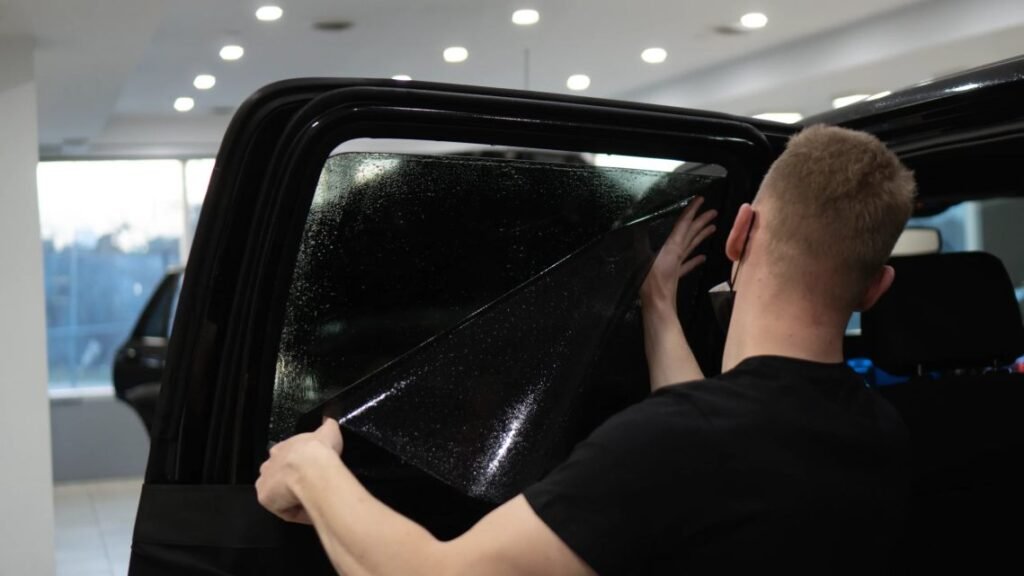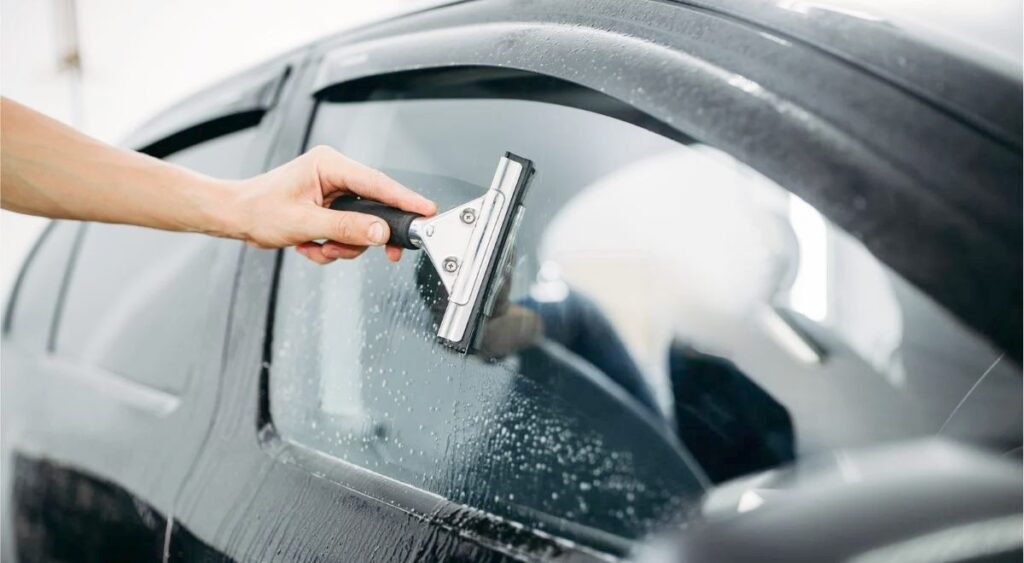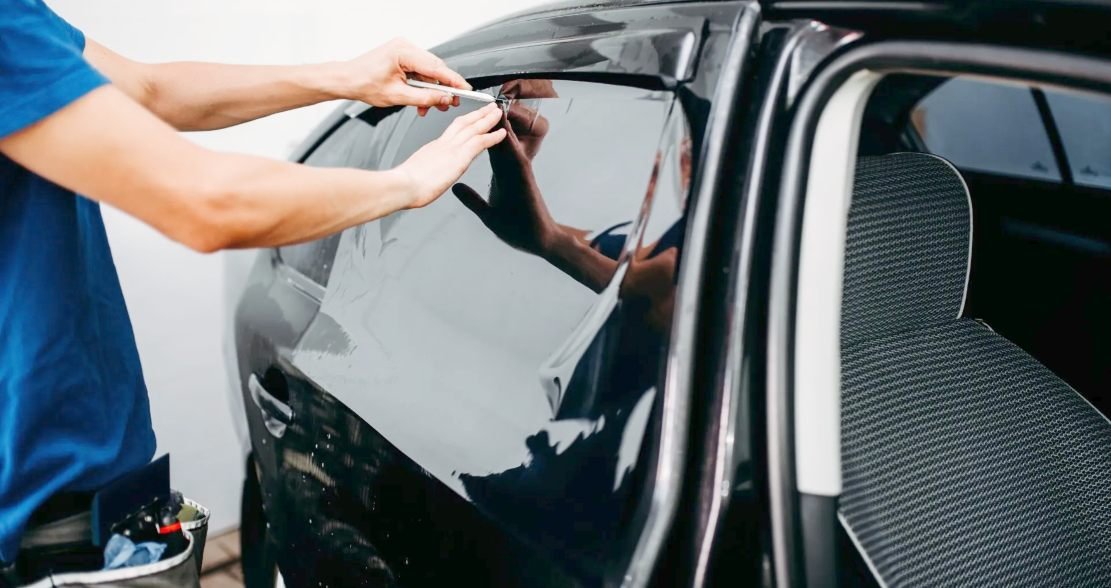Window tinting is a popular choice for many vehicle owners, as it offers numerous benefits such as protection from harmful UV rays, increased privacy, and improved aesthetics. But if you’re new to window tinting, you might be wondering: Does window tint go inside or outside? In this article, we’ll provide you with a clear and straightforward answer to this question.
We’ll break down the basics of window tinting, explain the installation process, and address some common concerns. So, let’s dive in and find out whether window tint goes inside or outside!
What Is Window Tint?
Window tint is a thin film that is applied to the windows of a vehicle or building to reduce the amount of heat and light that enters the interior. It is typically made from polyester and has a layer of adhesive on one side. Window tint comes in various shades and levels of darkness to suit different preferences and needs.
Does Window Tint Go Inside or Outside?
Window tint is typically applied to the inside of windows. The adhesive side of the tint is placed against the interior surface of the glass. This placement allows for better protection against damage and ensures a longer lifespan for the tint. Additionally, applying the tint on the inside provides a more seamless and professional appearance from the outside.
Sometimes It depends on the type of window tint you choose. Some tints are designed for inside installation, while others are meant for outside application. Overall, installing window tint on the inside is the recommended and standard practice.
Installation Process

Window tinting is a meticulous process that requires precision and expertise. It involves the following steps:
- Cleaning: Before installing the window tint, it is important to thoroughly clean the glass to ensure proper adhesion. Any dirt, dust, or debris on the glass can interfere with the tint’s ability to stick effectively.
- Measuring and Cutting: Next, the window tint is measured and cut to the appropriate size for the specific window. It is important to leave a small overlap on all sides to ensure complete coverage.
- Preparing the Tint: The adhesive side of the tint is then prepared by removing the protective backing. This should be done carefully to avoid any damage to the tint.
- Wet Application Method: Many professionals use a wet application method for installing window tint. This involves spraying a solution of water and soap onto the glass before applying the tint. The solution helps to prevent the tint from sticking prematurely and allows for easier adjustment and positioning.
- Applying the Tint: The tint is carefully placed onto the glass, starting from one corner and gradually smoothing it out towards the edges. It is important to avoid any bubbles or creases during this process.
- Squeegeeing: Once the tint is in place, a squeegee or similar tool is used to remove any excess water or air trapped between the tint and the glass. This helps to ensure a smooth and seamless appearance.
- Drying and Curing: After installation, the window tint needs time to dry and cure. This can take several days, depending on the type of tint and the climate conditions. It is important to follow any specific instructions provided by the manufacturer for the best results.
Types of Window Tints
There are several types of window tints available on the market. Each type offers different benefits and features, so it’s important to choose the right one for your needs.
1. Dyed Window Tint
This type of tint is made by placing a layer of dye between an adhesive layer and a protective layer. It is known for its ability to reduce glare and block out a significant amount of sunlight. Dyed window tints are also effective at reducing heat inside the car.
2. Metalized Window Tint
Metalized tints contain small metallic particles that reflect sunlight and heat away from the window. This type of tint offers excellent heat rejection and UV protection. However, it can interfere with electronic signals, such as GPS and cell phone reception.
3. Carbon Window Tint
Carbon window tints are made by mixing carbon particles with the tinting material. This type of tint offers superior heat rejection, UV protection, and glare reduction. It also provides a sleek and matte appearance.
4. Ceramic Window Tint
Ceramic tints are made by combining ceramic particles with the tinting material. This type of tint offers the highest level of heat rejection, UV protection, and glare reduction. It also allows for maximum visibility both during the day and at night.
5. Security Window Film
Security window films are designed to provide added protection against break-ins and accidents. They are made with a thick layer of polyester that can hold shattered glass in place, preventing it from causing harm. Security window films are often used in commercial buildings and high-security areas.
Benefits of Window Tinting

Window tinting offers several benefits, regardless of whether it is applied on the inside or outside of the window. Here are some of the key advantages:
- Heat Rejection: Window tinting can significantly reduce the amount of heat that enters a room or vehicle, keeping the interior cooler and reducing the need for excessive air conditioning. This can result in energy savings and increased comfort.
- UV Protection: Window tinting blocks harmful UV rays from the sun, which can cause skin damage, fading of furniture and upholstery, and even skin cancer. By reducing UV exposure, window tinting helps to protect your health and preserve the integrity of your belongings.
- Glare Reduction: Glare from the sun or bright lights can be a major issue, especially when driving or working on a computer. Window tinting can effectively reduce glare, improving visibility and reducing eye strain.
- Privacy: Window tinting provides an added layer of privacy by limiting the view of your vehicle or building. This can be particularly beneficial in urban areas or for businesses that deal with sensitive information.
- Aesthetics: Window tinting can enhance the appearance of a vehicle or building, giving it a sleek and stylish look. With a variety of tints and shades available, you can choose the level of darkness or reflectivity that suits your preferences.
Does Window Tint Go Inside or Outside? Some Common Concerns
One common concern that people have when it comes to window tint is whether it will affect their visibility from the inside. It is important to choose a tint shade that complies with local laws and regulations to ensure that it does not hinder your ability to see clearly. High-quality window tint should not significantly impact visibility when applied correctly.
Another concern is whether the tint will peel or bubble over time. While cheap or poorly installed tint can be prone to these issues, high-quality tint, when applied by a professional, should not have these problems. It is important to choose a reputable and experienced installer to ensure a long-lasting and durable tint job.
Maintenance and Cleaning

Maintaining your window tint is relatively straightforward. To keep it in the best condition, follow these tips:
- Use Gentle Cleaners: Avoid abrasive or ammonia-based cleaners that can damage the film.
- Soft Cloth or Sponge: Clean the tinted windows with a soft cloth or sponge.
- Regular Cleaning: Periodic cleaning prevents the buildup of dirt and grime.
Conclusion
In conclusion, when it comes to window tinting, the tint goes on the inside, offering protection from wear and tear. This process not only enhances the aesthetics of your vehicle or building but also provides valuable functional benefits. From reducing heat and glare to protecting against harmful UV rays, window tinting is a wise choice.
Related: Can You Use AC After Tinting Windows?
FAQs
The lifespan of window tint can vary depending on the quality of the tint and how well it is maintained. Generally, high-quality window tints can last anywhere from 5 to 10 years.
Yes, window tints can be removed. However, the process can be time-consuming and may require the use of heat and special tools to peel off the tint and remove any adhesive residue.
Window tint can be applied to most types of windows, including those on vehicles, homes, and commercial buildings. However, it is important to check local regulations and laws regarding window tinting, as there may be restrictions on the darkness or reflectivity of the tint.
